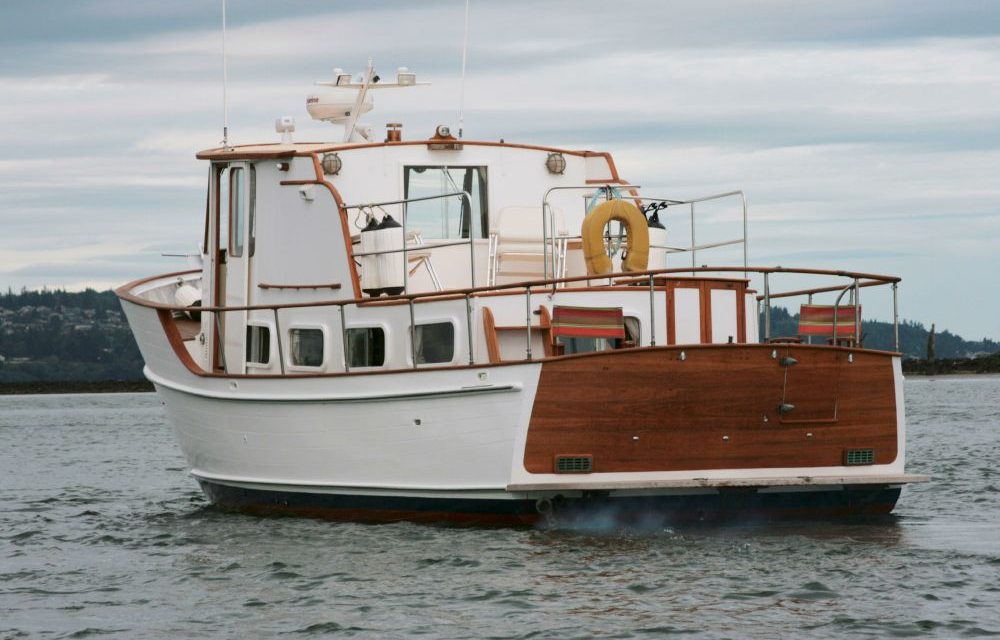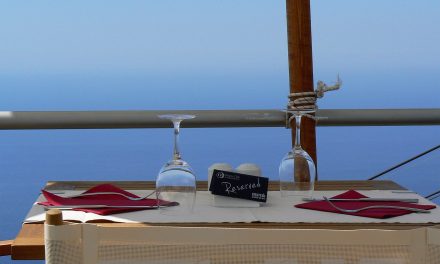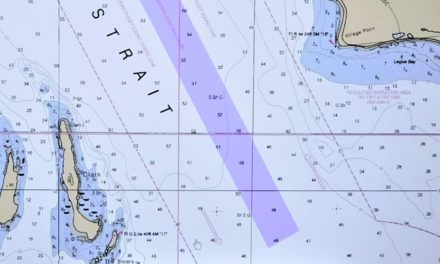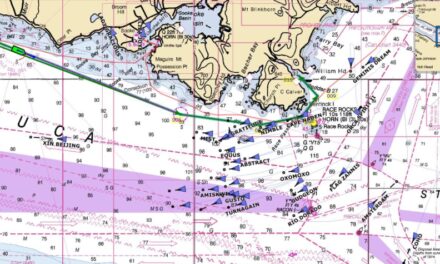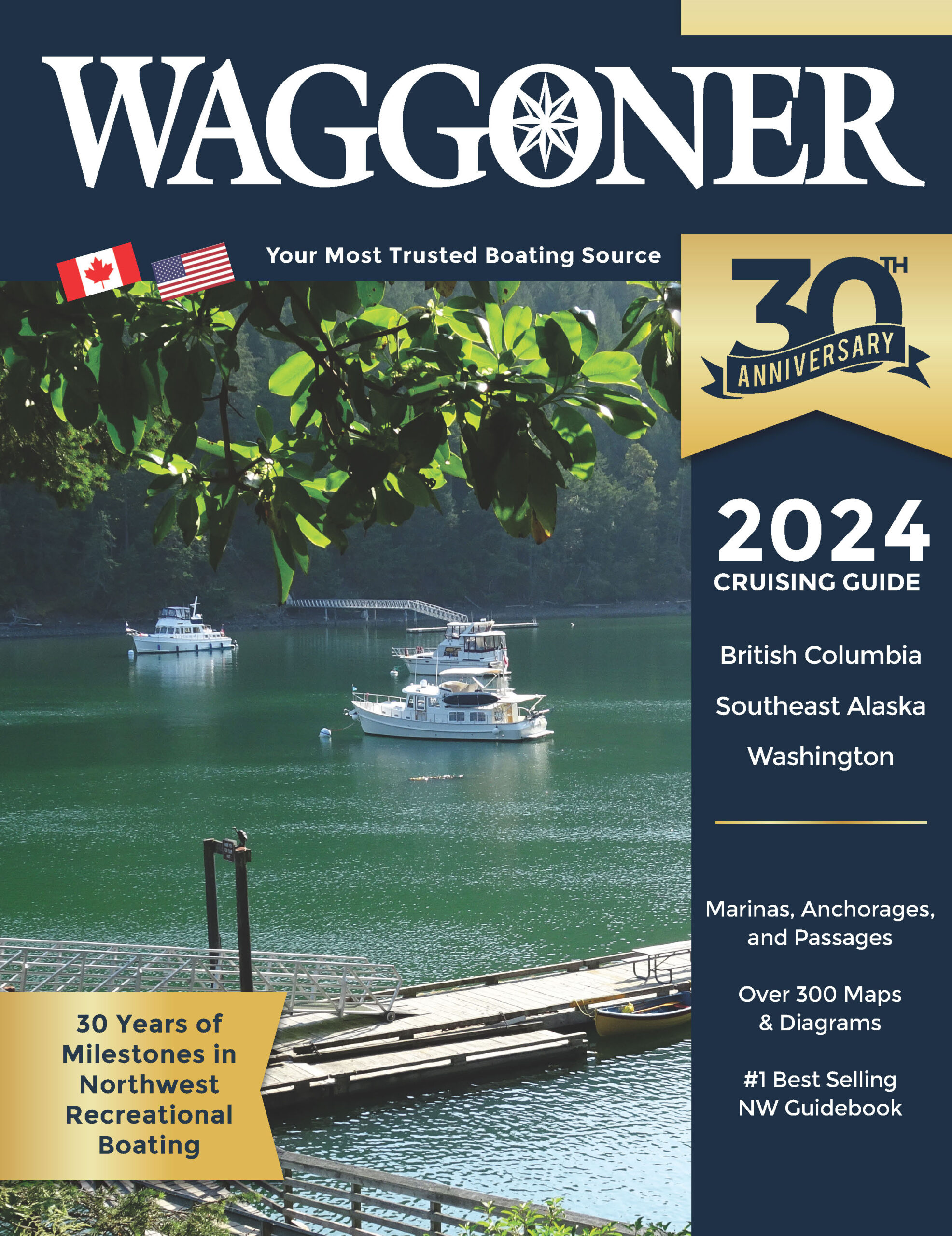Grand Banks – how it all got started.
Marketing departments love legend. What better way to instill a sense of value in a product than a story of an inspired young person studying naval architecture in the evenings while apprenticing with a master shipwright during the work days? Of course, after 15, 20, or 30 years of perfecting his or her knowledge and craft, the founder has a predictable epiphany. He or she realizes there is really only one way to build a superior boat, and, “the result is the world renowned line of Pileknocker Yachts.”
Sometimes, the truth is far more entertaining than the legends. I recently did some research on the founding of American Marine, the firm that ultimately evolved into Grand Banks. What I discovered demonstrates an important principle. You don’t need a nearly miraculous back story to build a very fine boat. From a modest beginning, Grand Banks has earned an admirable reputation for premium quality. By the same token, all the marketing hype in the universe won’t improve a mediocre or cut-corner build.
The founder of American Marine did not begin business as a professional boat builder. Back in the 1950s, Mok Cheong Street ran parallel to the runway for the Hong Kong International Airport. “Mok cheong” means “woodworker” in Chinese, and a number of master joiners and finish carpenters did business in the district. There was also a Bireley’s soft drink bottling plant on the same street. The manager of the plant was an American, Robert Newton.
Newton noticed an empty lot, immediately next to the area where the Bireley’s delivery trucks parked every night. The lot featured water access to Junk Bay. (A location that could prove to be commercially humorous).
After considering a variety of applications for the property, Newton concluded that the shoreline location, along with a plentiful supply of highly skilled woodworkers, suggested that boat building would be a nearly ideal use.

Newton and his sons, John and Whit, formed a company called American Marine and entered the custom yacht business. If buyers in the U.S. and Europe were initially skeptical about Chinese workmanship, those fears were quickly resolved by some impressive initial offerings. Newton didn’t need to be a naval architect; the custom boats he built were designed by the leading marine architects of the day. The Pacific Northwest’s Bill Garden was among the well-respected names who drew boats built by American Marine.
The typical thumbnail history of American Marine and Grand Banks skips over an important and very interesting portion of the firm’s evolution. Grand Banks was not the first series of production trawlers built by American Marine.
Arguably the very first production trawler, built to a standard plan and sold through a dealer network, was the 34’ 6” Chantyman, built at the Hong Kong yard of American Marine. The Chantyman was a pilothouse design, powered by a single diesel. American Marine stated the vessel could “sleep 7-9”, boasted a 2,000 mile range, and included two heads and a shower. The design utilized high bulwarks for exceptional freeboard in the forward sections.


American Marine began building the Chantyman line around 1962. Retail price in that era, for a new 34’ 6” diesel trawler, was $25,500. At about the same time, they hired a well-known naval architect named Ken Smith to design a new approach to a 36-foot single engine, diesel powered, long range cruising boat.
Smith’s efforts produced the ultimately legendary design that launched a new brand name, “Grand Banks”. Between 1965 and 1998, over 1,100 Grand Banks 36s were launched. Most of them remain in service today. Grand Banks yachts are in high demand, with well-maintained vessels regularly reselling for more than their original retail prices.
In 1968, American Marine moved production from Hong Kong to Singapore. In late 1973, prior to the 1974 model year, wood hull designs were abandoned in favor of fiberglass. Many traditional yachtsmen remained unsold on “new-fangled” fiberglass in the early 70s, so American Marine made the switch without notifying dealers or any of their customers with boats in the production queue. What most of us would give to listen in on some of the likely phone conversations:
“Hello, Mr. Beyer? This is Steve Sellers, down at the dealership. I’ve got great news for you! Your new 36-foot Grand Banks is here! You’re going to love it. It’s just beautiful. It’s almost exactly like you ordered!”
“What do you mean, almost?”
“Well. There’s just this one small thing. It came in with a fiberglass hull…”
Although the 36-footer was the first vessel launched under the Grand Banks trademark, American Marine quickly added a very popular 32-footer. Nearly 900 32-foot Grand Banks were produced during a long production run.
The largest selling of the traditional Grand Banks designs has been the Grand Banks 42. Considered a “right size” vessel by many coastal cruising skippers, the GB42 combines good seakeeping capability with well-considered deck layout, roomy interior accommodations, and exceptional fuel economy at displacement speeds.
In addition to the Grand Banks models, American Marine built some larger and very successful boats designed by Arthur DeFever. The “Alaskan” series were normally 45 to 49 feet in length. All of the Grand Banks Alaskan boats were wood hulls. For some reason, American Marine chose not to include the Alaskan models when they made the conversion to fiberglass. Arthur DeFever then sold plans for very similarly designed vessels as “DeFever Yachts”, which have been built in a variety of yards around the world.
American Marine, known for slow and economical boats, ventured into a line of much faster sport fishing boats known as “Laguna.” Powered with large, turbo-charged diesels the 33-foot and 38-foot Lagunas boasted cruising speeds of 21- 24 knots, with 30-knot performance claimed at wide open throttle.
Although very well designed and initially popular, any boat running at speeds in the 20-30 knot category will use a substantial amount of fuel. The Laguna series languished after the early 70s Arab oil embargo and the rapidly escalating diesel prices that followed. Roughly 175 Lagunas were launched, and they are often available on the resale market. Those fuel prices everybody though were ridiculously high in 1974 sure seem like a bargain today.
While a tale of a boat builder spawned from multiple generations of salty dog shipwrights sounds romantic, it’s a fact that one of the most highly respected and consistently fine quality boat brands was established by a guy who ran a bottling plant. Newton didn’t need to be a naval architect, engineer, or shipwright—he had sufficient business sense to recruit from among the most highly qualified professionals in those fields.
“Seems there was this empty lot, next to the soda pop plant…..”
—Chuck Gould

